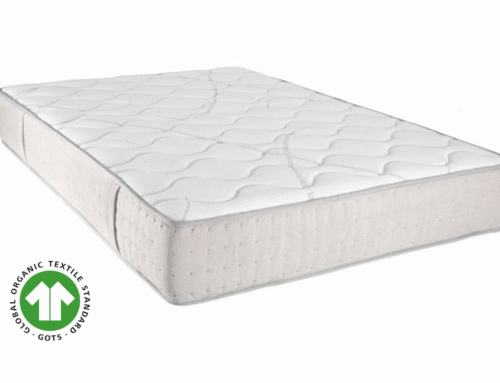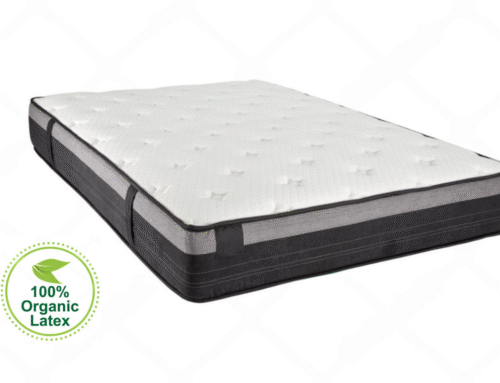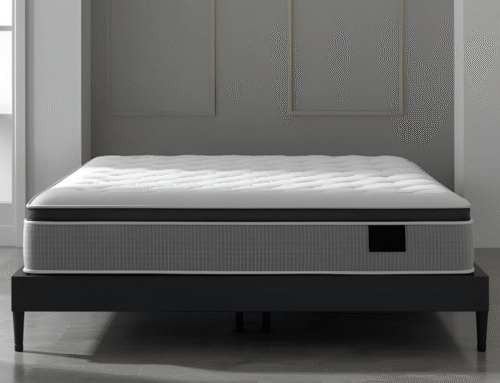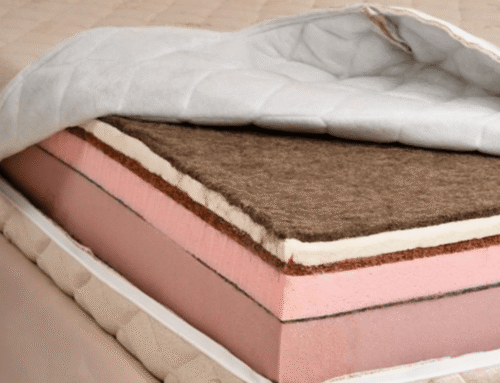Latex mattresses are known for being supportive, durable, and comfortable. But one detail people often overlook is thickness. A mattress that’s too thin can put pressure on the shoulders and hips. One that’s too thick can reduce support and make you feel like you’re sinking too far in.
The right thickness depends on body type and how you sleep. Lighter sleepers can do well with thinner latex mattresses. Heavier sleepers, or those with back pain, usually need something thicker for better support. Comfort layers also matter. They balance softness with firmness so your body stays aligned through the night.
In this guide, we’ll explain how mattress thickness affects comfort and support. We’ll also cover how many layers are common, what thickness works for different sleeping positions, and how latex compares to other materials like memory foam. By the end, you’ll have a clearer idea of what to look for before choosing a latex mattress.
Key Takeaways
- Mattress thickness affects how your body sleeps during the night. Too thin might pressure-point, and too thick will disrupt alignment.
- 8–10 inches of latex thickness is best for most sleepers. It strikes a perfect balance of cushion and support, particularly for back and side sleepers.
- Layered structure is just as important as height. Having a soft comfort top with a solid support core keeps your spine in alignment all night long.
- Dunlop latex requires less thickness than Talalay latex. Dunlop is heavier and more firm, whereas Talalay provides softer, springier support with greater depth.
- Heavier sleepers appreciate thicker constructions, approximately 10 to 12 inches. Thicker mattresses cut down on sagging and address joint and back pain in the long run.
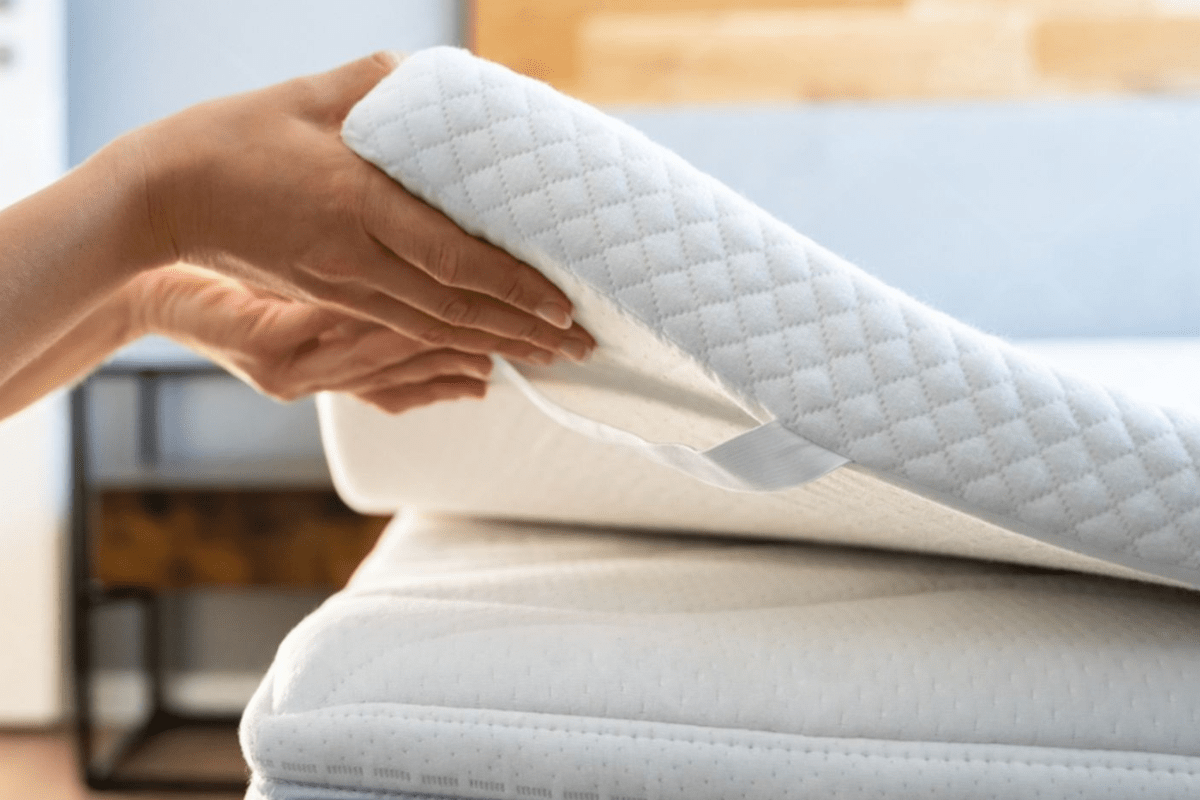
Why Mattress Thickness Matters
Latex mattress thickness is an important factor in overall comfort and durability. They are usually between 6 and 12 inches, and sleeping position and body type can dictate the selection. The thinner form could be suitable for lighter body types in terms of firmness but less suitable for those requiring more pressure relief. Side sleepers will probably find that a low bed lacks sufficient cushioning of hips and shoulders. A higher build is more pressure-relieving and contours, but too high can sometimes subvert posture and spinal alignment.
Thickness has a direct impact on the manner in which the body adjusts to the surface without sacrificing support. Latex works best in a layered setup, providing a softer comfort layer on top of a more supportive base. Cushioning is therefore provided without sacrificing on the support needed for rested comfort. Thickness also affects practical aspects of ownership and long-term performance, influencing overall support and comfort, so considering the weight of a latex mattress and its tendency to sag over time is essential when determining how thick a latex mattress should be.
What Is the Ideal Thickness for a Latex Mattress?
Latex mattresses work best at 8 to 10 inches. A 6-inch thickness is convenient for kids, light adults, or a guest room as it is sufficient in providing comfort without being too cumbersome. Most adults receive consistent support with the 8-inch build that is firm during nighttime.
Taller individuals or individuals who prefer a softer, more cushioned feel use 9 to 10 inches almost exclusively. This is deep enough to relieve pressure and still maintain the responsive nature latex is so famous for. The extra thickness also stops bottoming out with regular use.
Above 12 inches is more a personal choice than a necessity. Some prefer the dense, layered feel of added height but it contributes little to comfort or longevity. Most people actually prefer the range of 9 inches because it provides the best balance of support and comfort.
Latex Mattress Layers
Latex mattresses usually consist of two or three layers that provide balance between support and softness. The mix provides sleepers with a more responsive mattress surface while maintaining structure firmness for maximum support in the long run. Most people like the way these mattresses conform without sacrificing stability.
- Comfort Layer (Top): Typically 2–3 inches thick, it’s soft and plush. It is meant to support pressure points so the body has the ability to settle into an even improved position.
- Support Core (Base): Typically 6 inches thick, it’s firm and stable. It engages the body and assists in enabling healthier spinal alignment throughout the night.
- Optional Transition Layer: This middle layer is a feature on some mattresses that provides either extra cushion or some added firmness depending on the way the mattress has been constructed.
The layers work together to provide both structure and comfort. Most sleepers confirm that the feel is supportive but forgiving, which is the reason latex is a top choice for people who desire durability in conjunction with natural feel.
The layered construction of a latex mattress is important in achieving the perfect balance between support and comfort, and sleepers can adjust its feel according to preference, combining the number of layers with ways to make it softer.
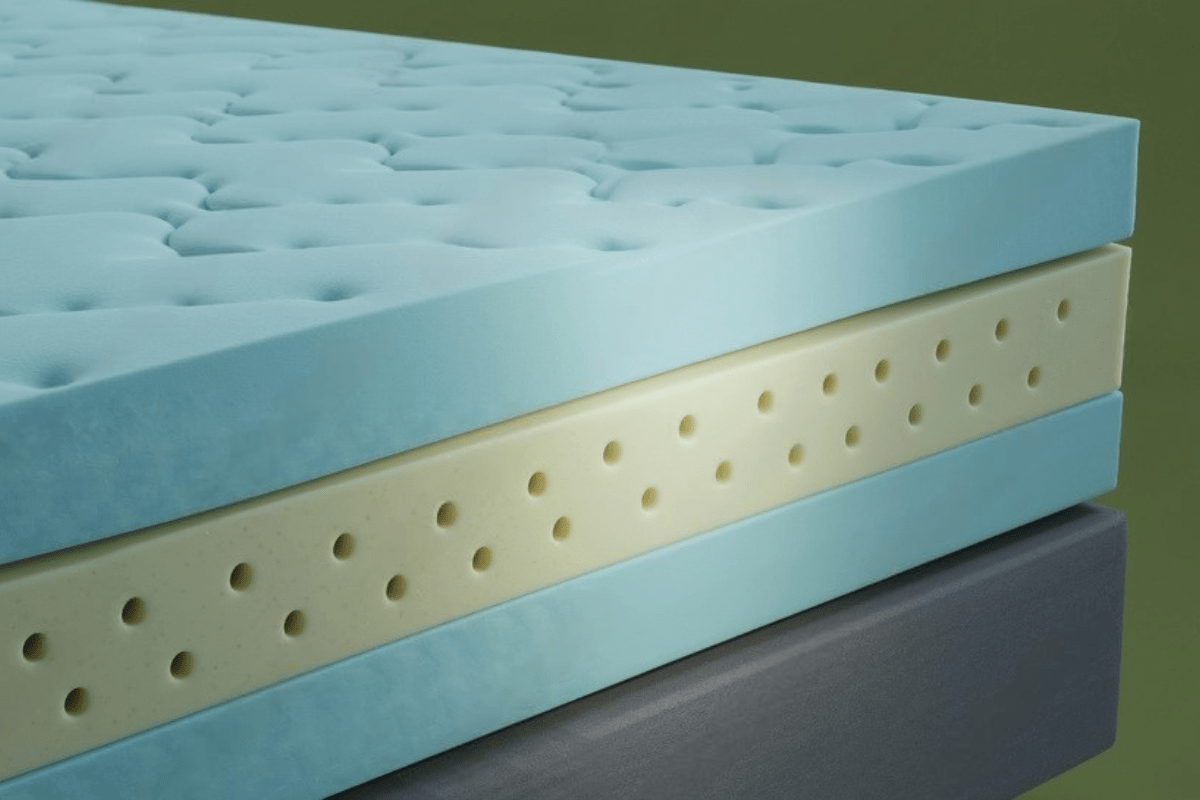
Dunlop vs Talalay: Does It Affect Thickness?
Dunlop latex feels denser and firmer. Because of that, a mattress made with it doesn’t always need to be very thick to feel supportive. It’s steady, holds its shape, and gives even pressure relief without adding extra layers. People who like a firmer bed often go for this type.
Talalay latex, on the other hand, is softer, lighter, and responds more to movement. It has a bouncier, more cushioned feel. To get that comfort, it usually needs a thicker layer. The added depth makes the bed feel plush, which works well for people who want more softness.
In the end, it’s a personal choice. If you prefer stability, a thinner Dunlop layer might suit you. If you like a softer, more buoyant surface, a thicker Talalay layer is the better option. Both give solid support—the difference is in how much cushion you want.
Best Latex Mattress Thickness for Back Pain
People who live with back pain usually notice right away if a mattress helps or makes things worse. The right kind of mattress often has two parts: a softer top layer that eases pressure and a firm base that keeps the body steady through the night. One common setup is about 2–3 inches of softer latex on top and 6–7 inches of firmer latex underneath. The soft layer cushions spots like the shoulders and hips, while the firm layer prevents sinking too deep. Together, they help the spine stay in a more natural position.
For many, a latex mattress that’s around 9 to 10 inches thick feels like the best mix of comfort and support. It has enough strength to hold the body up but still offers a little give. Over time, that balance can ease daily aches and stiffness.

Firm vs Soft Latex Mattress: Does Thickness Change?
Softer latex mattresses usually feel better when they’re a bit thicker. If the mattress is too thin, you might sink in too much and hit the firmer layers underneath. Extra height gives you more cushion while still keeping enough support. This also helps avoid that “bottoming out” feeling when you sleep.
Firmer latex mattresses don’t need as much thickness. Because the material is already dense and supportive, even an 8-inch mattress can feel solid and reliable. The firmness spreads out your weight, so you don’t need as much depth to stay comfortable and aligned.
If you’re comparing the two, softer latex works best at around 9–10 inches or more, while firmer latex can stay comfortable at a thinner height. Thickness does matter for comfort, but the right choice depends on how soft or firm you like your bed.
Do Latex Mattresses Sag Over Time?
Latex mattresses hold up longer than usual foam beds. Most find that the shape remains supportive for years, particularly with natural latex, which seems to last longer than synthetic. Unlike lower-priced foams that form dips, latex remains the same throughout the surface.
Thicker models do better in the long term, particularly those constructed with multiple layers and thick latex. A core of about six inches or thicker provides the mattress with stability and decreases the likelihood of sagging. Owners who’ve made the investment typically find fewer complaints about body impressions.
Maintenance also has something to do with how well a mattress will age. Turning it every couple of months keeps the pressure evenly distributed, particularly for people who sleep in the same position each night. With some care, latex beds can last far longer than the typical lifespan of many other types of mattresses.
Is a Thicker Latex Mattress Always Better?
Thick latex mattresses provide extra cushioning and durability but are not ideal for all. Increased thickness typically provides a softer bed, whereas thinner beds are stiffer but still supportive. Comfort also varies enormously based on weight and sleeping position.
For light sleepers that are about 150 pounds and lighter, a slimmer latex mattress would be appropriate in providing sufficient support without being too soft. For those who are heavier, they might want 9–12 inches for better weight distribution in relief against hip, shoulder, and joint pressure.
Thickness also has an impact on response to movement. Softer, thicker layers feel luxurious initially but wear lower down, whereas thinner mattresses give a harder surface at the top. Proper balance of thickness with individual needs guarantees proper support and comfort during the night.
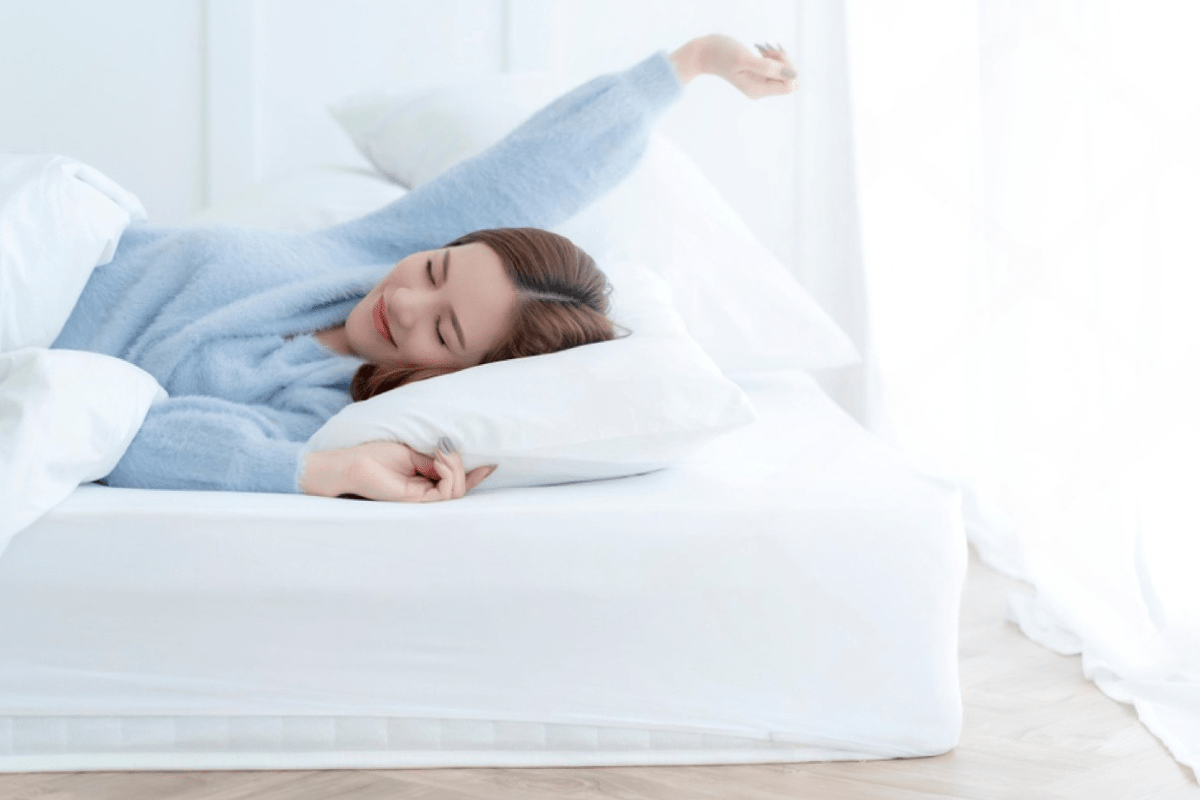
How Many Layers Should a Latex Mattress Have?
Latex mattresses tend to have two layers for simplicity seekers, usually a soft and firm one. This configuration offers general comfort and support without overdesigning the mattress more than it has to be, leaving the sleep surface simple and responsive. Many sleepers prefer the balance it provides without making any other changes.
A three-layer design is versatile with a mix of soft, medium, and firm layers to offer a more tailored feel. The design permits slight variations in comfort and support to enable sleepers to feel the support and comfort suitable for different sleeping positions. It is also suitable for couples who prefer different firmness levels.
Luxury or adjustable latex mattresses may have four or more layers, providing extra flexibility and versatility. Such types are ideal for sleepers who love to play around with firmness or require a mattress that can be rotated or flipped over for varying sensations. The additional layers provide gentle support throughout the body, particularly for heavier sleepers or those that require special comfort.
Final Thoughts
The ideal latex mattress thickness depends on body type, sleeping position, and personal comfort. Side sleepers may like 9–10 inches topped with a soft layer to accommodate shoulders and hips. Back sleepers feel most balanced with 8–9 inches yielding medium-firm support for the spine.
Stomach sleepers generally need about 8 inches with a firmer mattress to keep the midsection from sagging. Heavier individuals prefer 10–12 inches with strong support layers to keep everything aligned. These thicknesses reduce pressure points and improve overall sleep.
Natural latex provides durability and fewer chemicals, which is a good bet for long-term use. Both Dunlop and Talalay options offer comforting support, though their feel is slightly different. Choosing the correct thickness can ease tossing and turning, which can lead to more consistent and restorative sleep, and maintaining the mattress properly through cleaning, moving, cutting, and removing odors helps preserve its thickness, support, and longevity.

